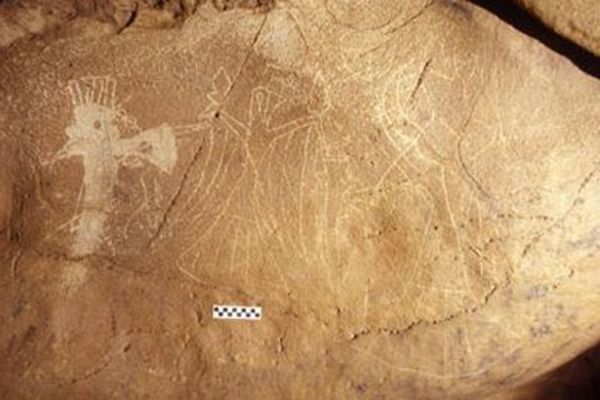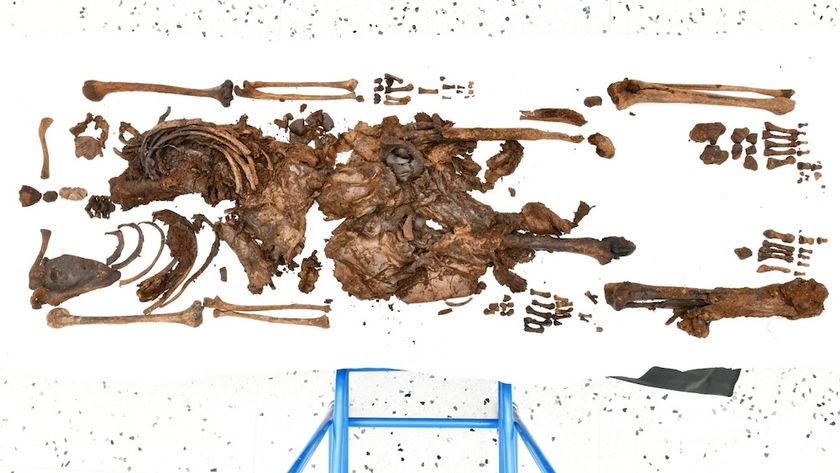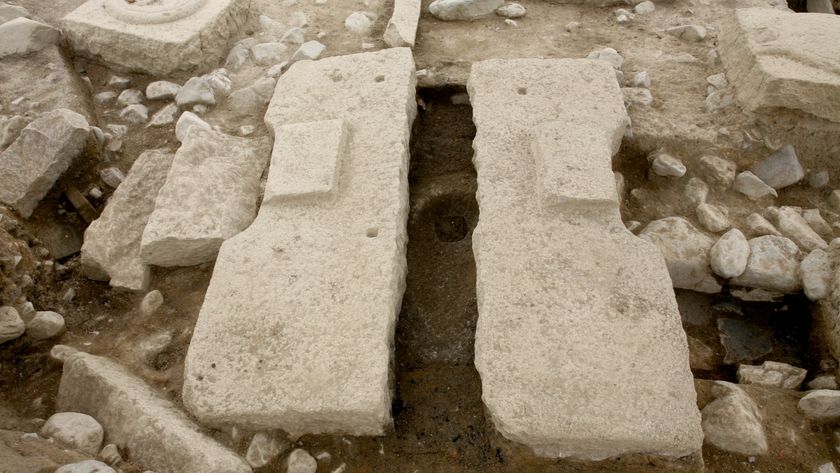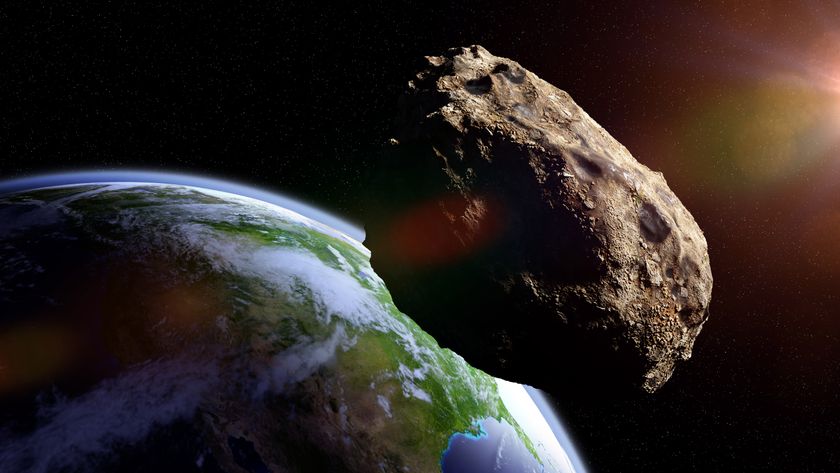Prehistoric Paintings Reveal Native Americans' Cosmology

(ISNS) -- A large, sophisticated civilization that once built one of the largest cities in the world left behind hundreds of works of art, carved or painted on rocks in the open air or deep in caves in the Appalachian Mountains in the Southeastern United States, archaeologists have reported.
That art work, some of it 6,000 years old, tells a unified story, the view the Native Americans had of the universe they lived in, according to archaeologists. It was a layered cosmology, similar to civilizations from ancient Greece to modern religions, full of spirits -- good and evil -- and colors -- dark and light.
The paintings reflected not only where they were painted, but contemplated the layers of their spiritual world, according to Jan Simek of the University of Tennessee at Knoxville. Simek, along with Nick Herrmann of Mississippi State University, Alan Cresser of the U.S. Geological Survey, and Sarah Sherwood at the University of the South who published their findings in the current issue of the journal Antiquities.
The people are known to archaeologists as the Mississippians or the Mound builders, named for the ceremonial mounds they built across the area, many of which survive to this day.
The Mississippians were mostly an agricultural people. They grew corn and squash and lived in hundreds, perhaps thousands of farming communities across the Southeast, said Thomas Pluckhan, associate professor of anthropology at the University of South Florida and editor of Southeastern Archaeology.
Archaeologists tended to minimize their culture in the past, underestimating the complexity, but work done by researchers such as Simek have brought to light just how complex their civilizations were, he said.
"They connected the dots," Pluckhan said.
Sign up for the Live Science daily newsletter now
Get the world’s most fascinating discoveries delivered straight to your inbox.
The city of Cahokia began around 600 AD across the Mississippi River from what is now St. Louis. Cahokia's population may have reached 40,000 people, which would make it the largest city ever built in what is now the United States prior to the 1780s when Philadelphia's population caught up. In 1250, Cahokia's population of 15,000 matched London and Paris.
Cahokia was abandoned by the 15th century.
When Europeans arrived in the 16th century, the Mississippians had generally evolved or been replaced by the tribes or ethnic groups we now know as Cherokee or Cree or other groups. Anthropologists aren't sure.
Before then, Pluckhan said, the Mississippians were loosely connected sociopolitical groups, usually associated with a chief, sometimes sharing languages.
The mounds were used as platforms for the chiefs' houses or for the site of a religious building.
The oldest paintings are in caves, Simek said, some of them more than a mile-and-a-half inside the Earth, where the artists would have had to bring torches and supplies to do their work. Some of the caves were used for burials, but mostly they were sites of religious observance, and the art was part of the rituals.
Although the oldest art work includes the oldest cave art in North America and was dated to 6,000 years ago, most of the art work in the study was completed in the 11th-17th centuries.
The researchers explored 44 open air sites in Tennessee and 50 caves, some of which are located on private land. Some sites have been preserved, but some of the art is not. The paper deliberately avoided mentioning the specific location of any to protect them.
The artwork found on the walls of the caves reveals how the Mississipians thought about the world and universe around them, which was probably similar to earlier Native American religious structures, such as the Mayans, Simek said.
For the Mississippians, the cosmos were organized into levels or spheres, and humans occupied just one of those levels, Simek said. The others were occupied by spirits.
The paintings reflected the separation of spheres.
In the lower levels of their cosmology, the art showed malevolent spirits and transformative figures, including shape-changing humans, often turning into birds. The cave art depicted the lower depths. The paintings showed weapons, sometimes in acts of violence, including at least one with an ax coming out of a human head.
Above the humans were benevolent spirits that drove the weather and looked after the crops. The Mississippians relied on them for their existence and livelihood.
The surface paintings--the higher level--often were simpler, with human faces facing outward instead of in profile. They tended to have less detail, Simek said. One showed a man dancing with a rattle.
The art in the caves was done in black, using carbon for coloration; the ones on most rocks in the open air were red, using iron oxide (rust) for coloration. The subjects also reflected where the art was in relation to the world, Simek said.
"It is not surprising that they would attempt to connect the landscape of the mind with the landscape of nature," Simek said.
Linking art to cosmology is not unique to these people, he said. The ancient Egyptians did it when they constructed their pyramids, the builders of Stonehenge may have done so as well, as did the builders of the great medieval cathedrals.
"Humans often in their religious beliefs divide the universe into various parts," Simek said, "into sort of a strata--an upper world that humans rarely are part of; a lower world that humans are not a part of. Most often humans occupy the middle part of the world. And certain aspects of experience and aspects of this experience are attributed to those different layers.
"These folks are doing what is a common phenomenon," he said.
Inside Science News Service is supported by the American Institute of Physics. Joel Shurkin is a freelance writer based in Baltimore. He is the author of nine books on science and the history of science, and has taught science journalism at Stanford University, UC Santa Cruz and the University of Alaska Fairbanks.
Most Popular




